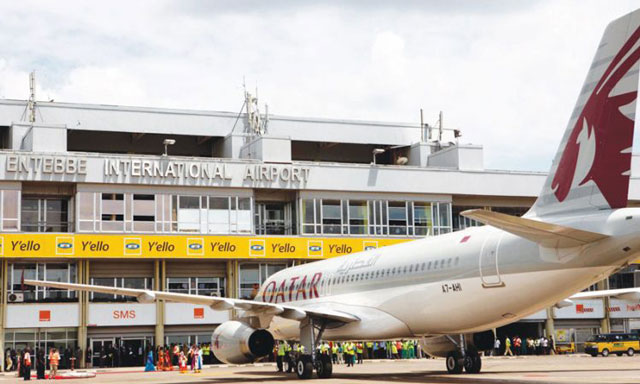
SAATM is designed to lift restrictions on market access in Africa and to remove restrictive bilateral air service agreements (BASAs) between state pairs
COMMENT | DEREK NSEKO | This week marked exactly 22 years since the signing of the Yamoussoukro Decision (YD). For those with interest in the African aviation industry, the Ivorian city of Yamoussoukro represents a significant milestone in the history of the continent.
On the 14 and 15th of November 1999, African ministers and government representatives in charge of civil aviation under the auspices of the AU (then OAU), signed up to an agreement that bound their respective states to a decision that would see the full liberalization of air transport services on the continent.
African leaders recognized that one of the main reasons hampering the growth of Africa’s air transport sector was access to markets. African states have always taken a restrictive and protectionist approach to aviation policy as they guard their often poorly performing national airlines.
Implementation of the YD was slow to say the least and in 2018 a new initiative was launched. The Single African Air Transport Market (SAATM) would give fresh and renewed energy to the implementation of the YD and African states recognized that the creation of open skies was a key enabler to the economic integration of the continent. The AU adopted the SAATM as a flagship program for its agenda 2063 alongside other initiatives such as the African Continental Free Trade Area (AfCFTA) which has seen significant progress in the past year)
SAATM is designed to lift restrictions on market access in Africa and to remove restrictive bilateral air service agreements (BASAs) between state pairs. It provides for the granting of 1st up to 5th freedom rights for designated airlines among SAATM states. 5th freedom rights essentially give an airline the right to carry revenue passengers from one’s own country to a second country, and from that country onward to a third country.
A recent study in collaboration between IATA and Intervistas on the potential benefits of liberalization in Africa reviewed 607 Bilateral Air Service agreements and found that 61% of them are not compliant to the YD. The countries with the least compliant BASAs in Africa were found to be Uganda, Burundi, Libya, Seychelles and Morocco
Across Africa, 35 countries have signed the solemn commitment to SAATM but only 17 have gone ahead to sign the memorandum of implementation. Uganda belongs to nether of the 2 groups.
Why SAATM?
But why should SAATM be so important to Africa and individual states such as Uganda?
In 2009, Africa had 598 city pairs connected to each other by air, 10 years later in 2019, the continent had moved to 812 city pairs showing a sluggish growth in intra-African air connectivity.
It is believed that a lack of political will due to non-appreciation of the benefits of SAATM is the biggest impediment to its progress. Africa’s poor air connectivity has in-turn hampered the ease of doing business and kept the cost of flying at a premium
According to the intervistas study, SAATM will add 589,000 jobs to the African continent and boost GDP by 3.96 Billion.
In Uganda the study shows an expected traffic growth of 70 to 80% within a period of 2-3 years and a two-fold economic impact, direct and indirect
The direct benefit is a surge in traffic of up to 584,000 passengers, representing a 69% increase. This in turn will lead to ticket fare savings of up to USD 30.1 Million and leave a consumer surplus of USD 89.4 Million
But aviation supports and facilitates many other sectors and tends to have an even greater trickle down effect on the economy. SAATM is poised to have even greater and broader economic benefits for Uganda. It is estimated that 4,920 jobs will be created across the aviation sector and other spin-off sectors with up to 16,070 jobs being created through its catalytic impact.
In the tourism sector, which is hugely supported by aviation – Tourism contributes to 5.6% of Uganda’s GDP, SAATM is expected to add up to 151,000 tourism visits to the country translating to a tourism spend of USD 69.3 Million. The sector will add another 9,290 jobs to support its growth as a result and this will expand its GDP contribution by 0,29%. In total, SAATM will boost Uganda’s employment numbers by 30,280.
The facts reflect that Uganda needs to be more open to doing business, it needs to have a bigger appetite for regional cooperation and collaboration and that it needs to improve its intra-African connectivity
Uganda is a low-income country with a GNI per Capita of USD 780 meaning Ugandans are extremely low earners, they need a lower fare aviation industry in order to access and afford air transport. With a population of over 45 million, the opportunity exists to develop a thriving air transport market.
In 2019, Uganda received 842,000 intra-African passengers, ranking 14th on the continent in this regard. Between 2009 and 2019, the country’s intra-African air connectivity index increased by just 15% showing that policy shifts towards better connectivity and air access are little to non-existent.
African national airlines have been part of the problem, lacking the interest to lobby their governments for more enabling air transport policy and in fact often supporting more protectionist policies out of self-interest. It is no surprise that collaboration between African airlines is hard to come by.
According to IATA’s regional vice president for Africa, Adefunke Adeyemi, only 4.5% of airline capacity in Africa is shared via codeshare and on average African airlines have about 8 interline agreements to speak of versus a global average of 65. A damning indictment of African aviation.
Despite the challenges, benefits of having open skies in Africa are clear: lower fares, enhanced connectivity, increased tourism, increased trade, increased investment, with the air traffic growth translating to jobs, boost in GDP and socio-economic development. It’s a no-brainer!
Elsewhere, liberalization happened in the United states in 1978, leading to the transformation of air services and growth of the industry.
It also led to the emergence of new business models such as the low-cost model which saw the rise of Southwest Airlines, the biggest low-cost carrier in the world.
The same thing happened with gradual liberalization in Europe in the 90s which lead to the emergence of low-cost giant Ryanair and others. These airlines and new business models completely transformed the landscape of travel and ushered in a new generation of travelers.
With the aviation industry emerging from an unprecedented crisis and seeking ways to accelerate its recovery, the African air transport sector needs a liberalized market now more than ever. Uganda needs to sign up to the Single African Air Transport Market now!
********
 The writer, Derek Nseko is Founder and CEO at Airspace Africa – Africa’s fastest growing dedicated aviation digital publication
The writer, Derek Nseko is Founder and CEO at Airspace Africa – Africa’s fastest growing dedicated aviation digital publication
derek@airspace-africa.com
twitter: @av8r_derek
 The Independent Uganda: You get the Truth we Pay the Price
The Independent Uganda: You get the Truth we Pay the Price



